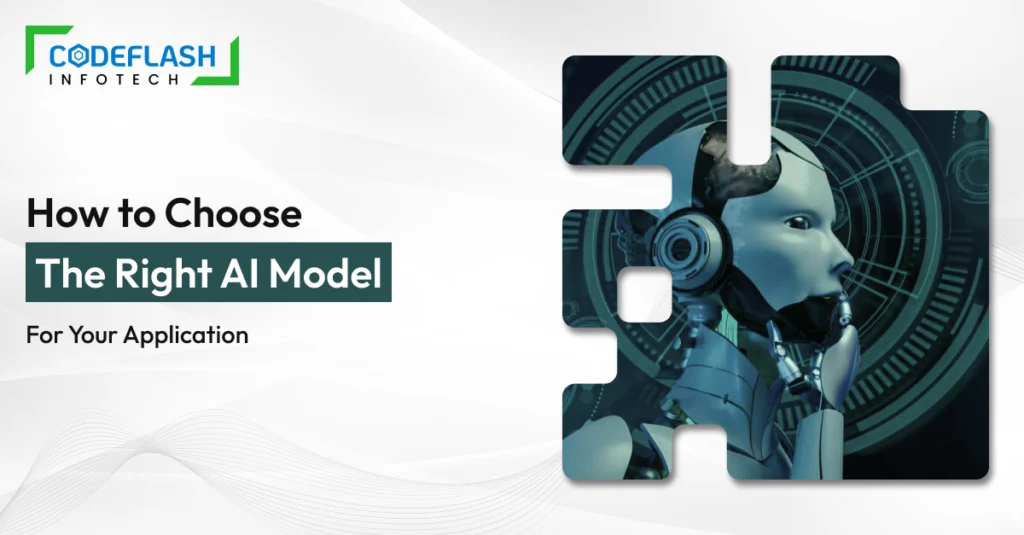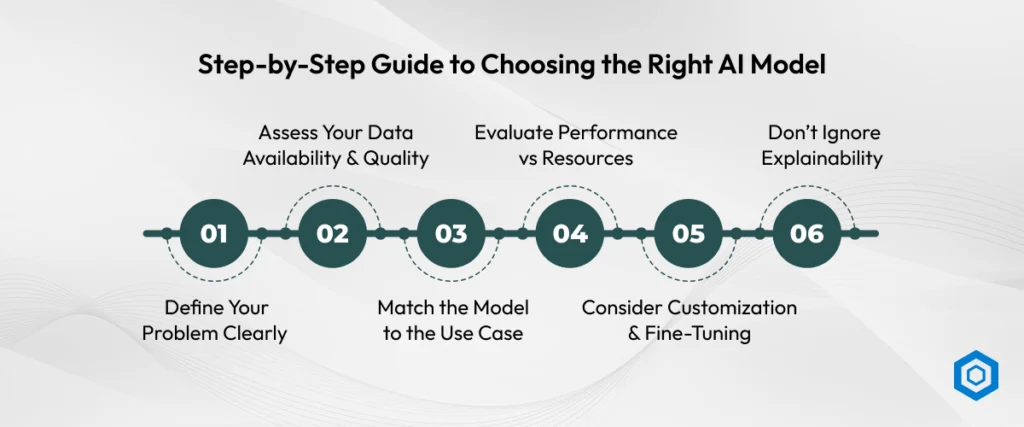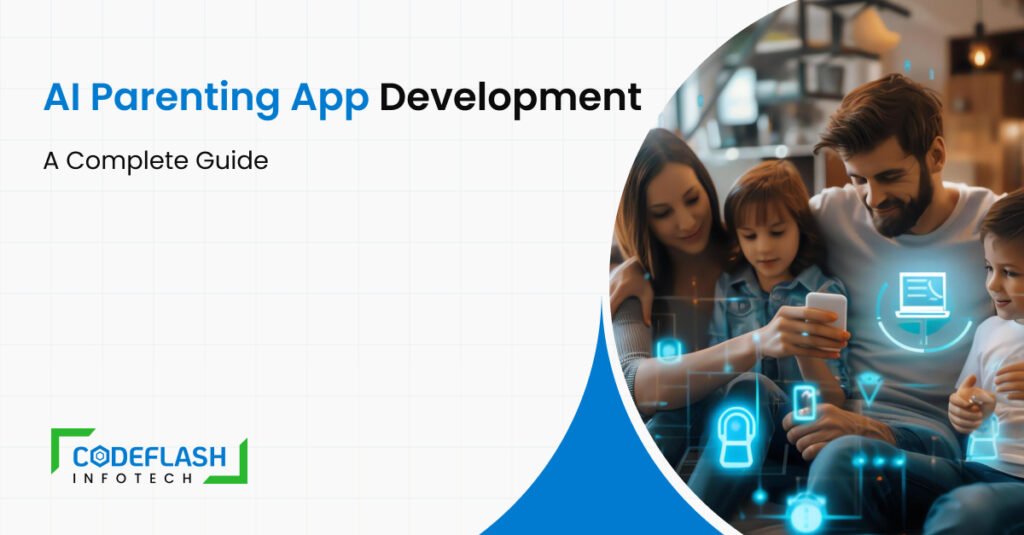
How to Choose the Right AI Model for Your Application
18 July
Artificial intelligence (AI) is transforming the way business actions are carried out, including automation in customer support, predictive Analytics, and image recognition. There is, however, a well-selected AI model behind every powerful AI application. Depending on whether you are developing a chatbot, a fraud detection system, or a recommendation engine, the choice of model will decide the accuracy, efficiency, and long-term scalability of your solution. The market for AI technologies is vast, amounting to around 244 billion US dollars in 2025, and is expected to grow well beyond that to over 800 million US dollars.
What are the steps in selecting an appropriate AI model for an application? It depends on your use case, data, compute resources, and business goals.
Understanding AI Models and AI-Based Models
An AI model is a decision-making program or algorithm that is trained using data and information. These models analyze the patterns in the data and apply them to new data. Most models have an AI-based model at their core: a pretrained model that has already acquired general knowledge using vast datasets. Developers tend to optimize those core models to target a particular task, which is cost-effective in terms of time and computing resources.
Some of the most popular base models are GPT (OpenAI), BERT (Google), and Segment Anything (Meta) to work with text, natural language understanding, and vision, respectively. Such pretrained models are a useful starting point for numerous practical applications.
Curious to see our AI solutions in action? Explore our portfolio

Step-by-Step Guide to Choosing the Right AI Model
- Define Your Problem Clearly
No matter what AI base model you consider, before you can evaluate it, you need to know what problem you are solving. Is it a classification problem, such as sorting spam mail? The regression task, e.g,. House prices? Or a piece of work like content writing or image making, a generation entrant? Depending on what exactly issues you have, the type of architecture you require will differ, e.g., Convolutional Neural Networks (CNNs) when working with images and Transformers when working with text.
- Assess Your Data Availability and Quality
The type, quality, and quantity of your data significantly determine the model you decide to use. Models of supervised learning, e.g., need labeled data, and models of unsupervised learning can even operate without labeled data. When you do not have too much data, the most promising path is the transfer learning with a pre-trained AI base model.
A good AI model example in this scenario is customer service chatbots based on OpenAI GPT-4, which can be fine-tuned on a small amount of FAQs your company (or OpenAI itself) has instead of training a new model altogether.
- Match the Model to the Use Case
The models are different for each task. For instance:
- For text analysis or summarization: GPT or BERT-based transformer models are good.
- For image classification: CNNs such as ResNet or EfficientNet are ideal.
- For time-series forecasting: LSTMs (Long Short-Term Memory networks) are a strong choice.
- For recommendation systems: Matrix factorization or neural collaborative filtering is appropriate.
Understanding these AI model examples helps match technology with application effectively.
- Evaluate Performance vs. Resources
There are very accurate models; however, they consume serious amounts of time to compute. Others are lighter and can execute fast in mobile devices or at the edge of computing devices. Before the selection, one needs to take into account such factors as:
- Inference time (how fast it makes predictions)
- Model size
- Scalability
- Energy and cost requirements
Still unsure which AI base model suits your needs? Let’s talk! Email our AI consultants
- Consider Customization and Fine-Tuning
Among the top benefits of an AI-based model is the capability to pursue fine-tuning on your domain level. When your AI has to work in a niche industry, such as legal tech or medical diagnostics, then domain-specific data is the solution. It often results in the best outcomes to fine-tune a base model.
Fine-tuning is the process of retraining the segments of the model on your data, such that it is aware of the language or patterns in your application.
- Don’t Ignore Explainability
The AI models may be black boxes- they give correct answers without any proper explanation. In the case your industry requires transparency (e.g., the finance or health industries), prefer models that can be interpreted (e.g., decision trees, logistic regression, or models built with explainability libraries like SHAP or LIME).
Should Artificial Intelligence Be Capitalized?
A common stylistic debate in writing about AI is whether artificial intelligence, capitalized, is the correct form. Generally, “artificial intelligence” is written in lowercase unless it appears as part of a proper noun (e.g., “Artificial Intelligence Lab”). In most technical and academic writing, keeping artificial intelligence capitalized is not standard practice, as lowercase is preferred for clarity, readability, and consistency across documents.
Conclusion
Selecting an AI model is not about simply opting for the most modern and popular one. It is a matter of alignment, which means that your goals, data, resources, and the task at hand all align. Pre-trained AI foundation models give a solid launching pad, but they require judicious fine-tuning. The model should always be tested against actual performance data, and consideration should be given to ethical issues such as bias and explainability. Whether you’re a startup building a prototype or an enterprise scaling operations, the right AI model can make or break your application.
Need help choosing the right AI model for your business? Contact us today

Frequently Asked Questions
An AI base model is a pre-trained AI model that has been learned on large datasets and serves as a starting point for training more specific applications. It is time and computation-cost-saving for the development.
Yes, GPT models of OpenAI have become popular in chatbots. Business-specific data can be used to fine-tune GPT-3.5 and GPT-4 to provide customer service.
To begin with, recognize what kind of task is yours (text, image, prediction, etc.) and analyze your information. Next, examine the model architecture that works best on similar issues and test it.
In most cases, massive models such as GPT-4 are bandwidth demanding. Nevertheless, there are lightweight variants such as DistilBERT or quantized models, which may be run on mobile or edge devices quite effectively.




